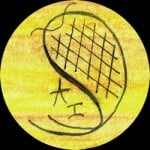Small table
Welcome! / Forums / General Woodworking Discussions / Projects / Small table
Tagged: legs, small table
- This topic has 24 replies, 9 voices, and was last updated 9 years, 9 months ago by
rickcorradini.
-
AuthorPosts
-
9 October 2014 at 8:46 am #119200
Thank you, Ricardo. Thank you, Dborn.
I’ve finished the top – rounding the edges of the large board I’ve used was a great effort! –
What I’ve learnt: legs with a single tenon are not so easy to glue, because any wrong, or uneven, pressure of the clamps (even if they’re placed in the middle of the leg) immediately causes the loss of the squareness. Two tenons, on the contrary, would make the job easier, because you could better distribute pressure; a single tenon – for the leg, I mean – should perhaps have a longer shoulder to have more stability while you’re clamping.
Next step: finishing… And my wife absolutely wants a “scratched effect” for the surfaces… I’ll let you know… 😉
Attachments:
You must be logged in to view attached files.11 October 2014 at 7:33 pm #119375The table looks very nice, congratulations!
Could you please explain how to do the scratched effect on the finish?
Thank you. 11 October 2014 at 8:40 pm #119378
11 October 2014 at 8:40 pm #119378Thank you, Ricardo!
Thank you, Greg!
Ricardo, I used a very simple technique to do the scratched effect for this table.
You have to:
– 1 sand all the surfaces (fine grit, 180);
– 2 paint all the pieces with white acrylic color (the one for artists) and let them dry (at least for four hours); [use water, if you need to dilute the paint][a thin coat is ok!]
– 3 sand again all the surfaces, but this time use a coarse grit (80-100) and scratch the painted surface ALWAYS along the grain; [this is a critical point: sand gently and let the original wood come to surface “hither and yon”; I mean, you have to create an irregular nuance; don’t remove all the acrylic coat!]
– 4 clean all the surfaces with a rag;
– 5 apply brown wax and (after few minutes) polish all the surfaces;
– 6 apply neutral wax and polish.
11 October 2014 at 9:28 pm #119379Ricardo,
you can also use two acrylic colors.
For the first bookshelf I made I used two acrylic colors (first blue, then white; neutral wax).
I used low quality spruce for the bookshelf and this technique saved my work.(ok, tenons are not rounded… :-D)
Attachments:
You must be logged in to view attached files. -
AuthorPosts
- You must be logged in to reply to this topic.
